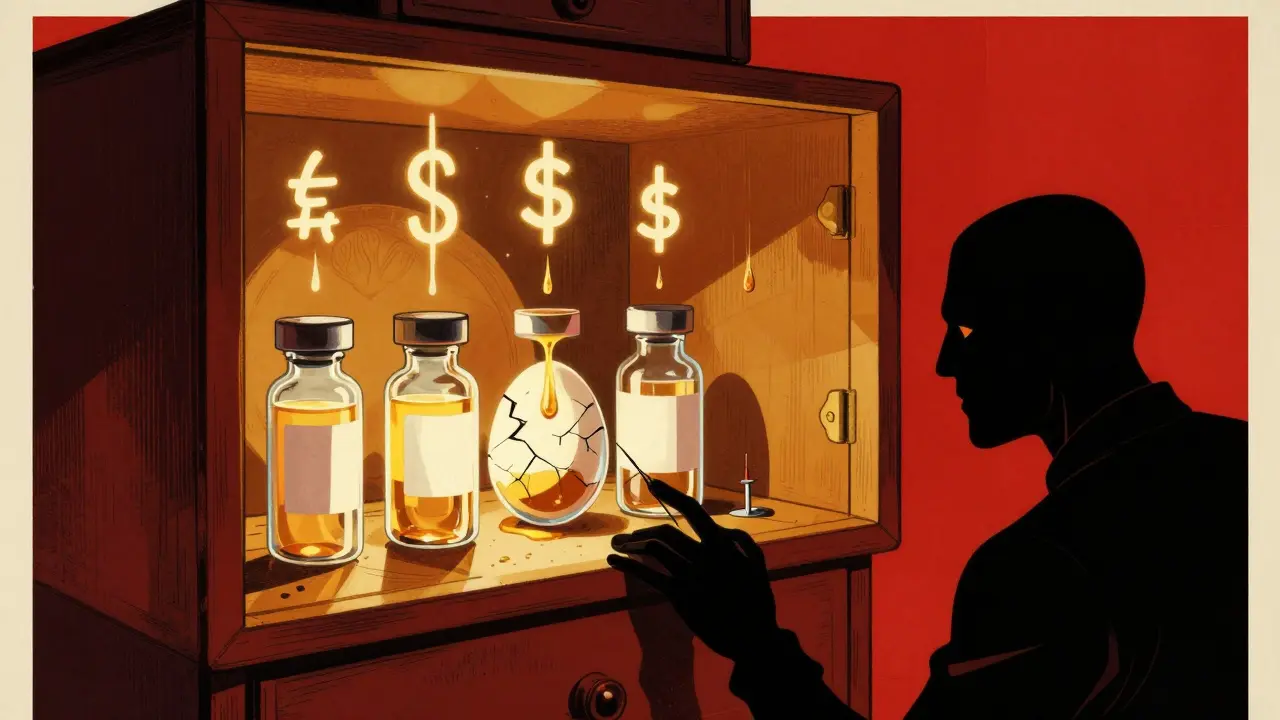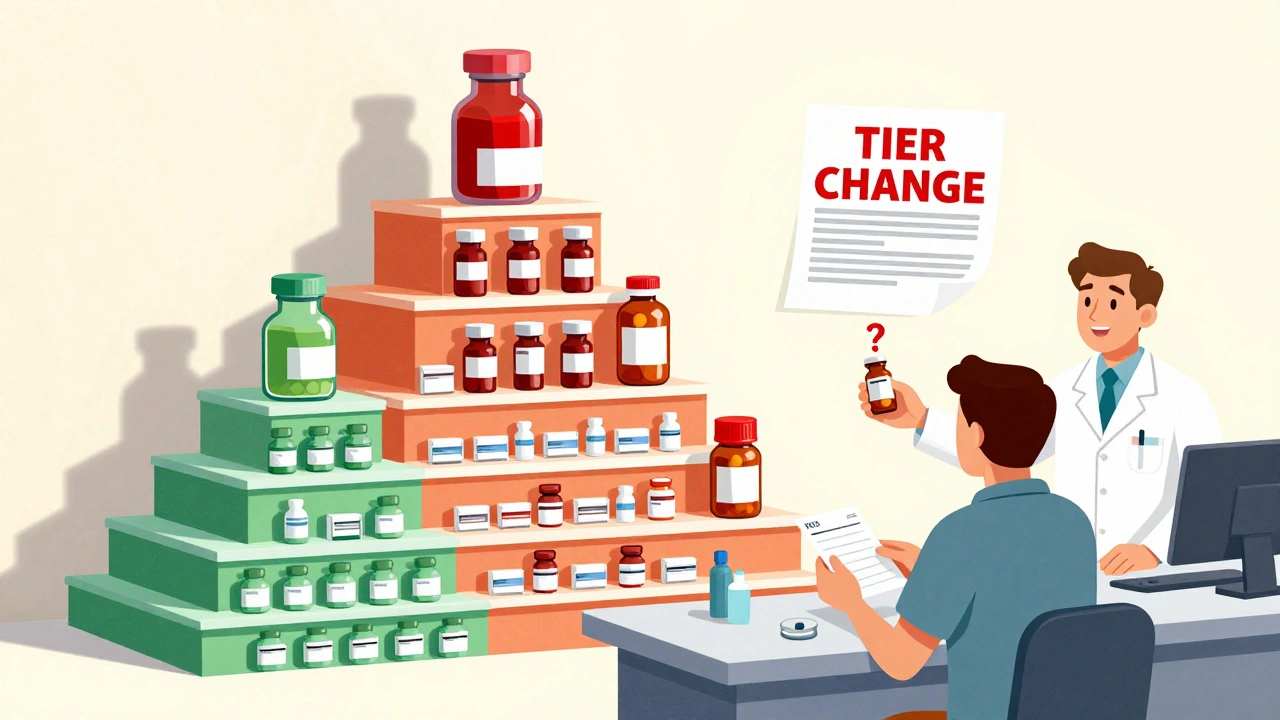Understanding Seasonal Affective Disorder (SAD)
Seasonal Affective Disorder, often abbreviated as SAD, may seem mysterious to many. Essentially, it's a type of depression that's linked to changes in seasons, typically starting in the late fall and early winter and subsiding during the spring and summer. It's not just a case of the 'winter blues' - it's a real condition that can have a significant impact on quality of life. As a sufferer, you may notice changes in your mood, energy, and behavior that coincide with the changing seasons. Understanding the nature of SAD is the first step towards addressing it effectively.
Recognizing Symptoms of Seasonal Affective Disorder
Knowing what to look for is critical in recognizing Seasonal Affective Disorder. Some common symptoms include feelings of depression almost every day, low energy, difficulty sleeping or oversleeping, changes in appetite or weight, feeling sluggish or agitated, difficulty concentrating, feelings of hopelessness, worthlessness or guilt, and in severe cases, thoughts of death or suicide. SAD isn't something you have to 'just endure' - if you notice these symptoms in yourself or someone you love, it's important to seek help.
Diagnosing Seasonal Affective Disorder
Getting a diagnosis for Seasonal Affective Disorder is an important part of the journey towards treatment and recovery. It's best to consult with a healthcare professional if you suspect you might have SAD. They may carry out a physical examination, conduct lab tests, and perform a psychological evaluation to determine if you have SAD. Your doctor may also ask about your lifestyle, eating and sleeping patterns, and whether your symptoms interfere with your daily life. This information will help them to make an accurate diagnosis and formulate a treatment plan.
Treatment Options for Seasonal Affective Disorder
The good news is that Seasonal Affective Disorder is treatable, and there are several options available. Treatment may include light therapy, where you sit a few feet from a special lightbox which exposes you to bright light, mimicking natural outdoor light. Psychotherapy, specifically cognitive behavioral therapy, can also help. Antidepressant medications may be recommended by your doctor. Lifestyle modifications, like getting regular exercise, ensuring you get enough sleep, and eating a healthy diet, can also make a big difference. Remember, it's important to discuss these options with a healthcare provider to find what works best for you.
Living with Seasonal Affective Disorder
Living with Seasonal Affective Disorder can be challenging, but it's important to remember that you're not alone and there are resources available to help you manage. Reach out to support groups, seek help from mental health professionals, and communicate openly with your loved ones about what you're experiencing. Small steps like making your environment sunnier and brighter, getting outside as much as possible, and exercising regularly can all help to manage symptoms. It's also important to practice good self-care – make time for activities you enjoy and spend time with people who make you feel good. Don't let SAD control your life - take charge, and live life to the fullest, regardless of the season.






Jennifer Ferrara
July 1, 2023 AT 20:10One might contemplate the ontology of melancholy as it aligns with the diurnal rhythm, wherein the shortening of photoperiod precipitates a cascade of neurochemical alterations. The discourse within the article appropriately distinguishes SAD from the colloquial “winter blues,” yet it could benefit from a more rigorous citation of longitudinal studies. Moreover, the lexicon employed occasionally drifts into layman’s terms, which, whilst accessible, undermines academic precision. It is essential, however, to recognize the lived experience of individuals navigating such affective fluctuations. In sum, the piece serves as a commendable primer, albeit one that could be refined further-definately a worthwhile read.
Terry Moreland
July 12, 2023 AT 11:09Hey, I totally get how crushing those winter days can feel. Remember, even small steps like a short walk in daylight can boost your mood. Keep experimenting with light therapy and stay connected with friends-you’re not alone in this.
Abdul Adeeb
July 23, 2023 AT 02:08The article’s exposition is mostly lucid; however, several grammatical inconsistencies merit correction. The phrase “subsiding during the spring” should read “subsidizing.” Additionally, “may include feelings of depression almost every day” would be more precise as “may include daily depressive feelings.” Consistency in tense and plurality throughout the text would further enhance readability. Overall, the content is informative, yet a rigorous proofread is advisable.
Abhishek Vernekar
August 2, 2023 AT 17:07I’ve wrestled with the winter shadows for several years, and I can attest that the strategies outlined are not mere theory but lived practice. First, I discovered that positioning a lightbox near my breakfast table turned a mundane routine into a therapeutic ritual. The light, calibrated to 10,000 lux, seemed to nudge my circadian rhythm back into sync, reducing the fog that clung to my thoughts each morning. Second, I began a modest exercise regimen-twenty minutes of brisk walking or indoor yoga-because movement releases endorphins that counteract depressive tones. Third, I made a conscious effort to curate my environment with warm hues; swapping cool, blue-tinged lighting for amber lamps created a subtle, comforting ambience. Fourth, I cultivated a gratitude journal, noting three small positives each day, which shifted my focus away from pervasive gloom. Fifth, I consulted a therapist trained in cognitive‑behavioral therapy, and together we reframed maladaptive thoughts that had taken root during the darker months. Sixth, I adjusted my diet to include omega‑3‑rich foods such as salmon and walnuts, noting an incremental lift in energy levels. Seventh, I resisted the temptation to oversleep, instead adhering to a consistent wake‑time, which stabilized my sleep architecture. Eighth, I reached out to a local support group, discovering that shared stories fostered a sense of solidarity and reduced isolation. Ninth, I experimented with vitamin D supplements after confirming my deficiency with a blood test; the supplemental boost contributed to a steadier mood. Tenth, I limited screen exposure before bedtime, allowing my melatonin production to occur naturally. Eleventh, I practiced mindfulness meditation for ten minutes each evening, which quieted rumination. Twelfth, I scheduled outdoor activities whenever possible, even if just a brief stroll during daylight, to capture natural light. Thirteenth, I kept a symptom diary, noting patterns that informed my physician’s adjustments to my treatment plan. Fourteenth, I embraced flexibility, understanding that some weeks would be better than others, and that progress is not linear. Finally, I remind myself that the seasonal dip, while challenging, is manageable with a multi‑modal approach, and that reaching out for help is a sign of strength, not weakness.
Val Vaden
August 13, 2023 AT 08:06Sounds like a lot of work, lol 😒
lalitha vadlamani
August 23, 2023 AT 23:05One must question the prevailing narrative that casts SAD as merely a “seasonal quirk” to be shrugged off; such trivialization betrays a deeper moral complacency. The text, while earnest, fails to interrogate the societal structures that exacerbate isolation during winter months-namely, reduced communal gatherings and constrained access to mental health services. Moreover, the suggested remedies are presented as universal panaceas, ignoring socioeconomic barriers that preclude many from affording light therapy devices. It is incumbent upon us to demand systemic change rather than individual adaptation. Until then, the discourse remains insufficiently critical.
kirk lapan
September 3, 2023 AT 14:04Dude, this article sounds like it was written by someone who never actually felt the winter slump. Light boxes? Sure, if you can splurge on that gadget, but not everyone can. Plus, the “just get some exercise” line is oversimplified-people have legit health issues that keep them from moving around. Also, the tone is so “let’s‑fix‑it‑quick‑and‑easy” that it ignores real‑world complexity. Basically, they’re selling a feel‑good fantasy, not a practical solution.
Landmark Apostolic Church
September 14, 2023 AT 05:03While I appreciate the attempt to simplify, reducing SAD to a checklist of lifestyle tweaks betrays an overly reductionist worldview. The human psyche cannot be distilled into a series of light‑box sessions and jogs; deeper existential angst often underpins seasonal dysphoria. Moreover, presenting these interventions as universally applicable disregards cultural variance in coping mechanisms. A more nuanced approach would integrate community‑based rituals alongside biomedical treatments. Until then, the article risks perpetuating a shallow, individualistic remedy.
Matthew Moss
September 24, 2023 AT 20:02It is evident that our great nation has the resources to combat seasonal gloom, yet many overlook the patriotic duty to maintain mental resilience. By embracing light therapy, we not only restore individual vigor but also reinforce the collective strength of our society. The article’s emphasis on personal responsibility aligns with the time‑tested American spirit of self‑reliance. Let us champion these methods as part of our national health agenda, ensuring that every citizen can face winter with steadfast resolve.
Antonio Estrada
October 5, 2023 AT 11:01Indeed, combining evidence‑based interventions yields the most robust outcomes for individuals experiencing seasonal affective patterns. Light therapy, when calibrated correctly, synchronizes circadian rhythms; concurrent cognitive‑behavioral techniques address maladaptive thought cycles. It is crucial to tailor dosage and timing to each patient’s chronotype, thereby maximizing therapeutic efficacy. Collaborative care, involving physicians, therapists, and patients, ensures adherence and monitors progress systematically. By adhering to these principles, we can deliver comprehensive, individualized treatment plans.
Andy Jones
October 16, 2023 AT 02:00Oh, brilliant-another article that claims “light therapy” is a miracle cure without mentioning the need for proper wavelength calibration. Also, the phrase “get outside as much as possible” is vague; many readers live in apartments with no balcony. And could we please stop implying that diet alone can offset neurochemical deficits? Lastly, the claim that “you’re not alone” feels like a platitude tossed in for comfort. In short, the piece needs more nuance and fewer clichés.
Kevin Huckaby
October 26, 2023 AT 16:59Sure, light boxes are great, but have you considered that too much artificial light can actually disrupt melatonin production? 🌞💡 Some folks swear by natural sunrise alarms instead, claiming a more “organic” reset. 🌅 Also, the emphasis on exercise overlooks cultural practices like indoor yoga or tai chi that are just as effective. 🧘♂️ And let’s not forget that community support can sometimes outweigh any gadget-people love a good chat over a warm cup of tea! ☕️ In any case, the one‑size‑fits‑all narrative just isn’t realistic.
Brandon McInnis
November 6, 2023 AT 06:58Great overview! I’ve found that blending light therapy with regular walks and a solid sleep schedule makes a huge difference. It’s also helpful to share experiences with friends-knowing you’re not alone can boost morale. Keep experimenting with what feels right for you, and don’t hesitate to reach out to professionals when needed. Together we can navigate the winter blues and emerge stronger.
Aaron Miller
November 16, 2023 AT 19:10Honestly-this article-while informative-fails to acknowledge the broader sociopolitical factors influencing mental health!; It glosses over economic disparities; it ignores the impact of urban planning on daylight exposure!; Moreover-its recommendations, though valid, are presented without sufficient critical scrutiny!; One must demand a more rigorous, interdisciplinary approach!; Only then can we truly address the complexities of Seasonal Affective Disorder!!!